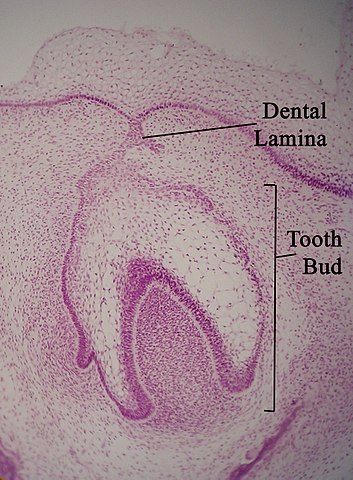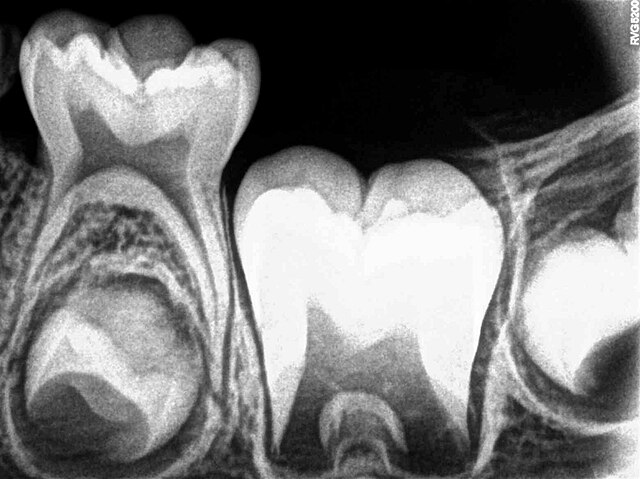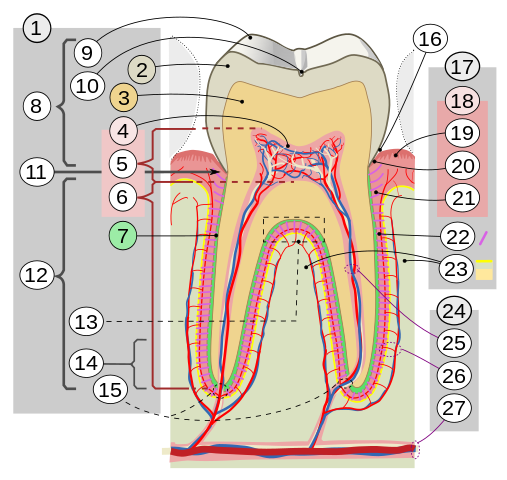We just learned about
Hypodontia.
When a dentist wants to look at your teeth, they give all your teeth a number
so they can talk about which ones are healthy or have cavities.
This is called
Dental Notation.
There are a few different ways that people number the teeth.
One way is called the
Universal Numbering System
Sometimes a dentist will start with the upper right back adult or permanent tooth as #1 and then go 2,3,4,5,6,7,8 to the top middle, and 9,10,11,12,1314,15,16 to the top back left tooth.
Then next is the lower back left tooth at #17, and then toward the front 18,19,20,21,22,23,24.
From the front left around to the front right, 25,26,27,28,29,30,31,32.
Those are for the adult teeth.
If it's a primary or baby tooth, they use ABCDE from top right to top middle, and FGHIJ from top middle to top left.
KLMNO from bottom left to bottom middle, and PQRST from bottom middle to bottom right.

(from: wikipedia -
universal numbering system)
Kid Facts - Blast from the past: Tendon





















